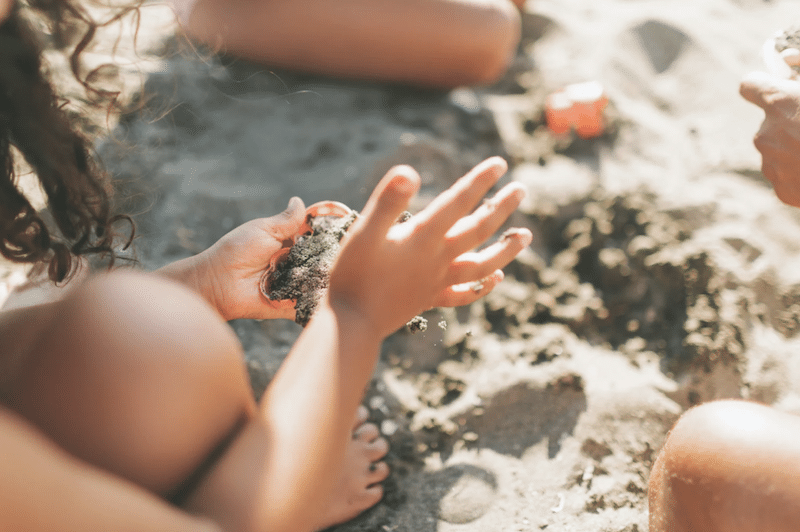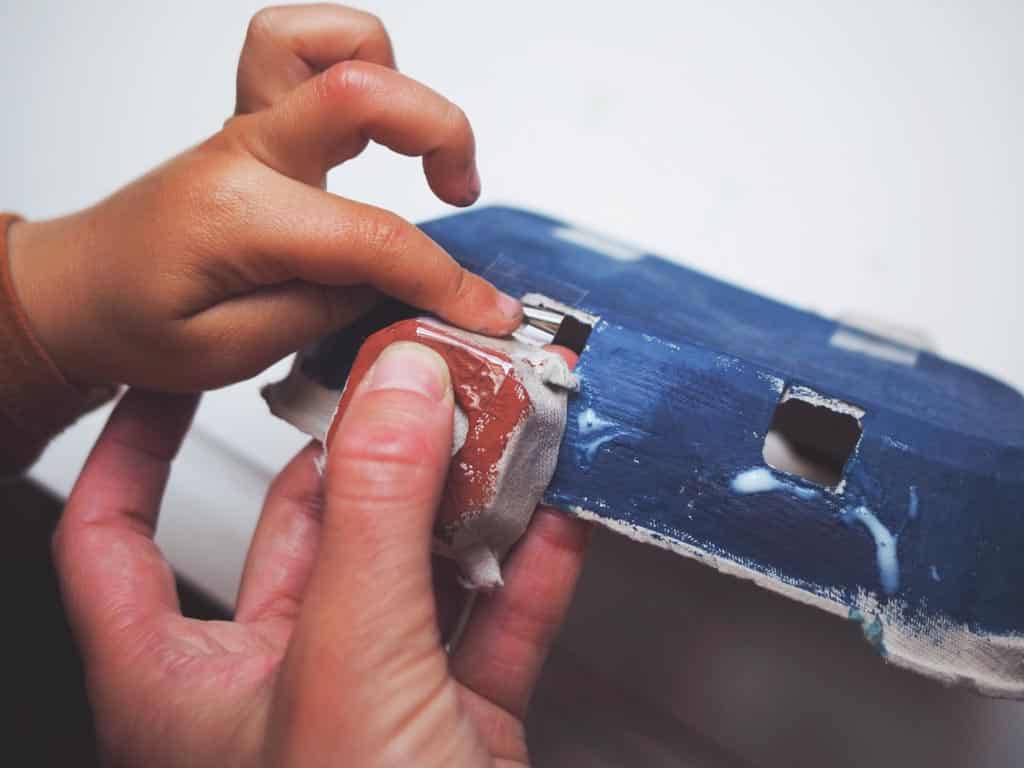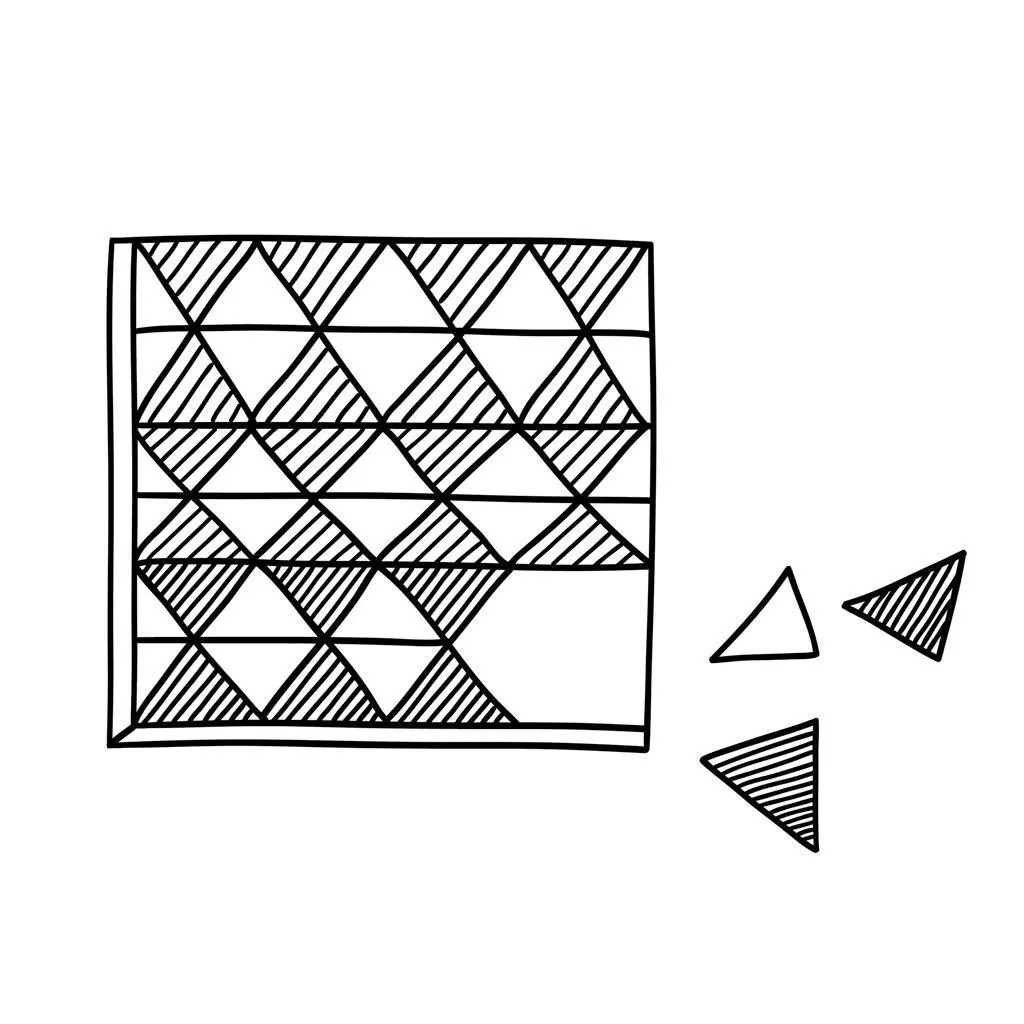Summer is in full swing, and we continue our series of inspiring ideas for playing with children. Today, we invite you to the world of sand – a natural material that offers endless possibilities and is certainly associated with vacation fun.
You probably remember it from your own childhood. Playing with sand is a classic activity that connects generations – from our grandparents, through our childhood, to today’s little ones.
And even though times change, sand remains one of the most fascinating materials for play.
The Magic of Sand
In my work, I have often observed surprisingly long periods of focus in even the youngest children during sand play. Why do almost all children enjoy playing with sand so much?
Sand, like water, is an open-ended material. The possibilities for exploring sand are endless, from simple sensory-motor activities, appealing even to babies – touching, kneading, deforming, pouring – to more complex cooperative play among older children, such as building forts together. Sand play is suitable for children of all ages and is not limited to making sandcastles.
Despite its appeal, it often has a calming and soothing effect. This allows children to immerse themselves in genuine exploration and develop a multitude of skills.
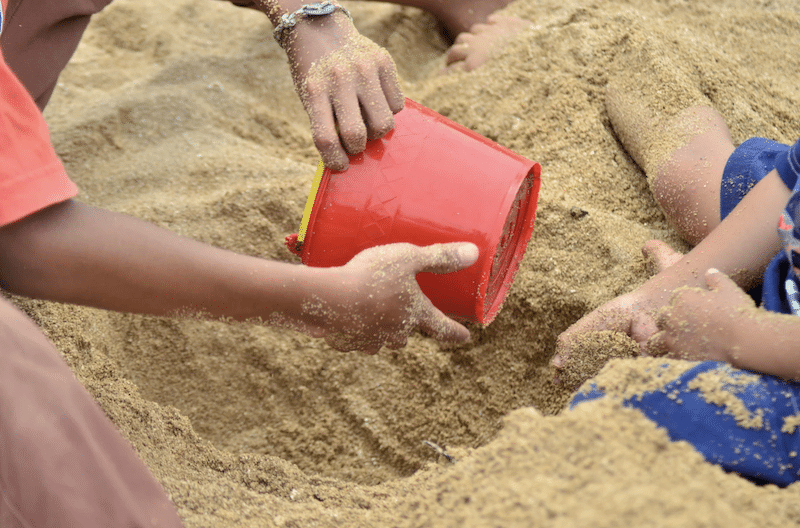
Why Playing with Sand Benefits Your Child
Playing with sand is not only great entertainment and a longer break for the parent, but it also brings numerous benefits for the child:
- Encourages Open-Ended Play: Like any open-ended play, sand play promotes creativity, creative thinking, and confidence in one’s ideas. Implementing their ideas and achieving intended goals in play strengthens a child’s sense of independence and self-confidence in later life.
- Stimulates Symbolic Play: Sand can serve as a great provocation for symbolic play, crucial for children between the ages of two and seven. Children can easily use sand to simulate cooking, for example. This form of play develops abstract thinking and understanding of cause-and-effect relationships, preparing the child for subsequent stages of cognitive development.
- Enhances Sensory and Motor Development: Sand play excellently stimulates the sense of touch and encourages exploration, which positively impacts sensory development, motor skills, and coordination from an early age.
- Versatile Learning Tool: Sand is such a universal material that it can serve as a tool for learning writing, math, or physical concepts. With a bit of creativity, a lot of knowledge can be integrated into play.
- Fosters Social Skills: Sand play often takes place in groups, which in turn promotes the development of social skills.
- Emotional Regulation: Working in a preschool, I have observed that during and after sand play, children are often much calmer, and if conflicts and strong emotions arise, it is much easier for them to self-regulate emotionally, especially if the play takes place outdoors. Such play can be relaxing for many children, helping them calm down and focus. Sifting sand through their fingers, squeezing, or building structures can be soothing and reduce stress.
5 Simple Sand Play Ideas
You might think that the sandbox in your garden has been forgotten, or you are planning a vacation by the water and wondering if the old bucket with molds will be enough of an attraction this season. Sometimes it’s worth helping your child discover new possibilities with sand and get absorbed in play by providing the right inspiration or provocation. That’s what we’ll be focusing on today.
1. Frozen Sand
What You’ll Need:
- Sand
- Water
- A container that you can place in the freezer
- Interesting objects to hide, such as dinosaur figurines, cars
- Large tub with water
- Spoons, bowls, and cups
You can prepare this activity in the evening with your child. Pour sand into the container, then hide the objects in it. Pour water over everything and place it in the freezer overnight. The next day, a fascinating ice block will await your child!
If your child enjoys this activity, you can next time prepare treasures in ice cubes or a large ice block. Without sand it will require a bit more patience.
How is it possible that a solid transforms into a liquid? Will we get to the objects faster by hitting the block with a spoon or pouring water over it? Or maybe it’s worth warming it up a bit with your hands… but not too long, because it gets a bit cold! Such an ice block is a wonderful educational tool, offering good fun while provoking hypotheses, experimentation, and knowledge building.
2. Kinetic Sand
You’ll Need:
- Kinetic sand (you can find a recipe here)
- Rolling pin
- Toothpicks
- Molds for imprinting (cookie cutters, blocks, animal figurines for footprint stamping)
Drawing patterns in kinetic sand is a perfect activity for evenings and cloudy days. Kinetic sand is a unique material that, thanks to its consistency, is ideal for indoor play.
Children can draw patterns, imprint shapes, and create various forms, which develops their creativity and manual skills. The rolling pin allows for smoothing the surface of the sand, while toothpicks and molds enable the creation of intricate patterns and imprints. You can use this activity for an engaging way to teach shapes, numbers, and writing.
Perhaps some wonderful pictures will emerge? Be sure to capture them in photos!
3. Waterworks and Rivers
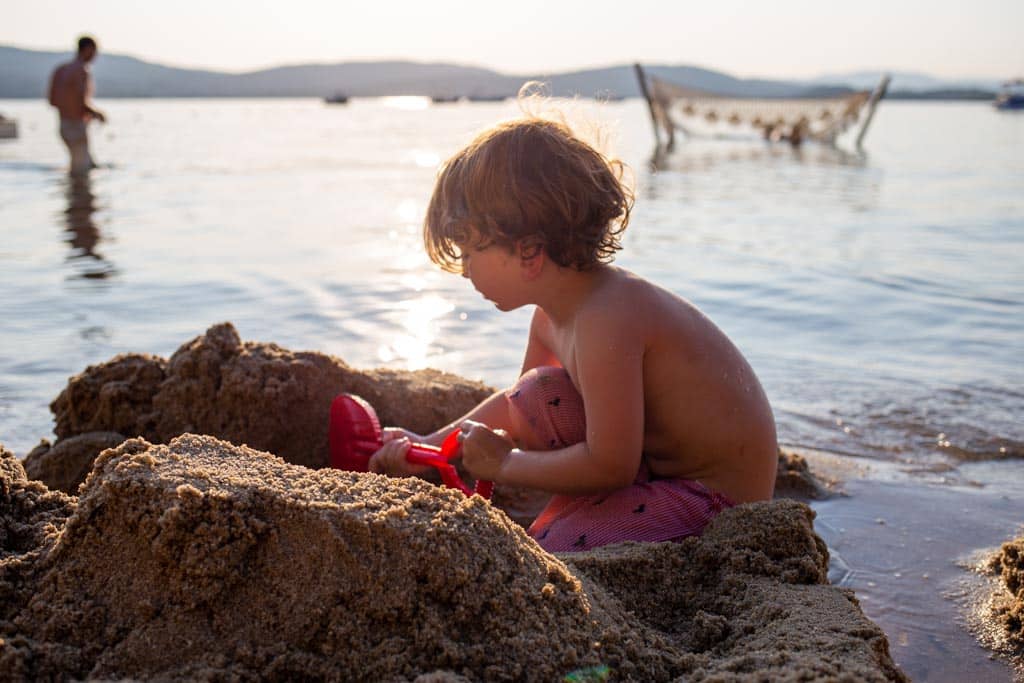
You’ll Need:
- Bucket
- Shovels, spoons
This activity is perfect for the beach and requires almost nothing. Optionally, you can bring shovels, spoons, and buckets to help guide the water into the channels. You can also experiment with stones and sticks.
Building systems of channels and rivers out of wet sand at the shore, through which water flows, is a simple yet excellent activity that teaches the basics of engineering and physics. Children learn how water flows through different structures, how dams work, and how the shape of the channels affects the flow.
4. Small World Play
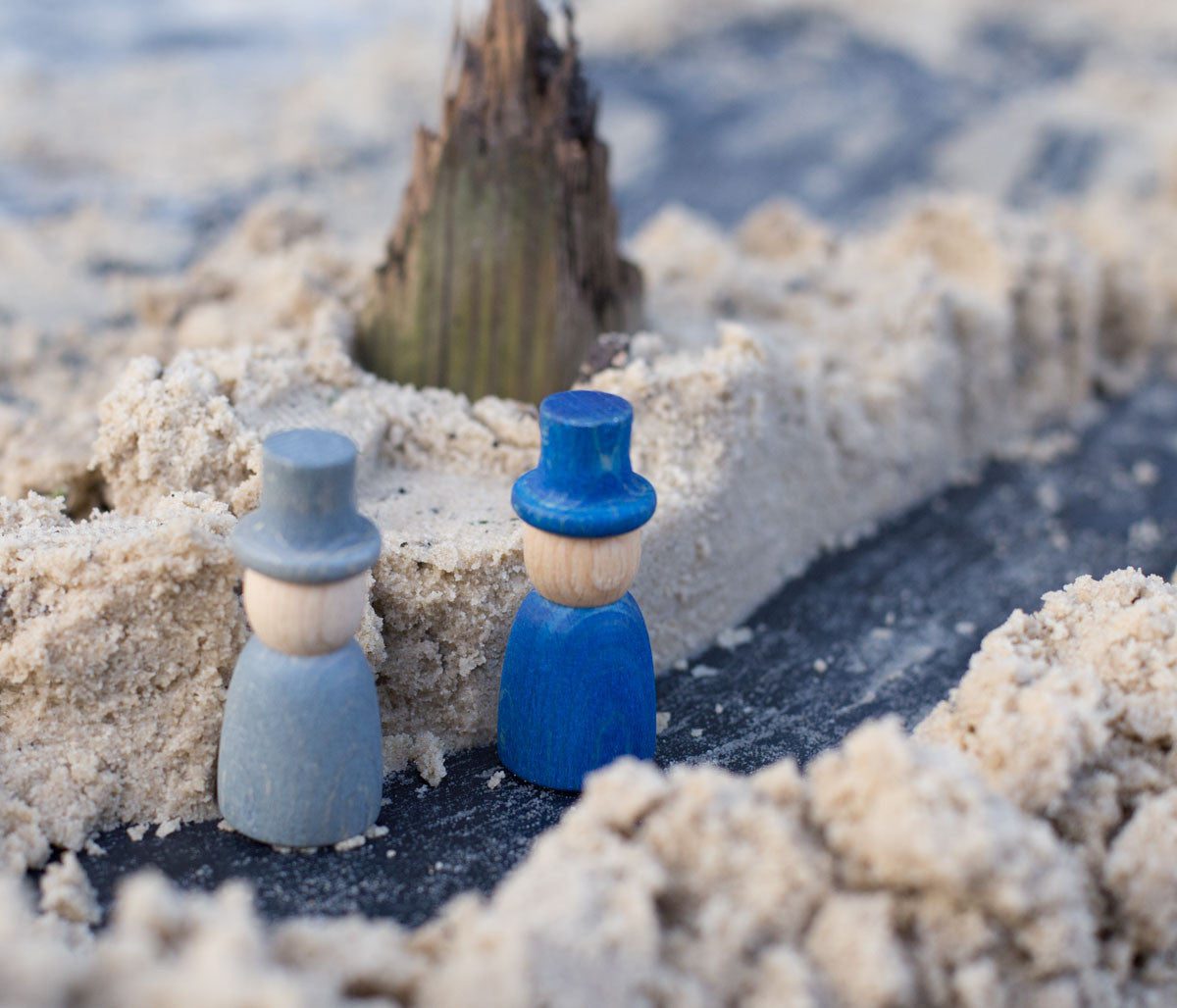
You’ll Need:
- Sand
- Figurines of people/animals, houses, cars, tracks, bridges, blocks
- Loose parts (pebbles, wooden pieces, food packaging)
Watch as your child creates worlds and develops stories with the sand! When heading to the sandbox or the beach, consider bringing toys that aren’t typically associated with sand. Leave the bucket and molds at home and instead bring trains and tracks, or play figures along with some old toilet roll tubes, small cups, pebbles – anything – and they’ll start to construct dramas and fairy tales.
5. Treasure Hunt
You’ll Need:
- Sand
- Water
- Large plastic tub/play tray
- Shells, coins, marbles, small stones, crystals, beads
- Sieve or colander
- Optional: waterproof gold paint, preferably spray, spoons, shovels
Your child will undoubtedly enjoy becoming a treasure hunter, discovering hidden objects in the sand!
Start by preparing the “treasures.” If you have gold paint, you can paint the shells, stones, and other small objects to give them a special look. Wait for the paint to dry. In a large bowl or play tray, mix the sand with water to achieve a wet consistency, then hide the treasures in the sand, ensuring they are well camouflaged.
Give your child a sieve or colander and encourage them to search through the sand for the hidden treasures. You can also provide small shovels or spoons for digging.
You can extend the play by cleaning, sorting, and weighing the treasures, for example.
This activity can be easily organized both indoors and in the garden.
Final word
Playing with sand offers numerous benefits for children’s development. The ideas we’ve shared, provide a range of engaging activities that can keep children entertained while fostering their growth and learning.
So next time you have the opportunity, encourage your child to dive into sand play and let the adventure begin. Their next big discovery might just be a handful of sand away!

